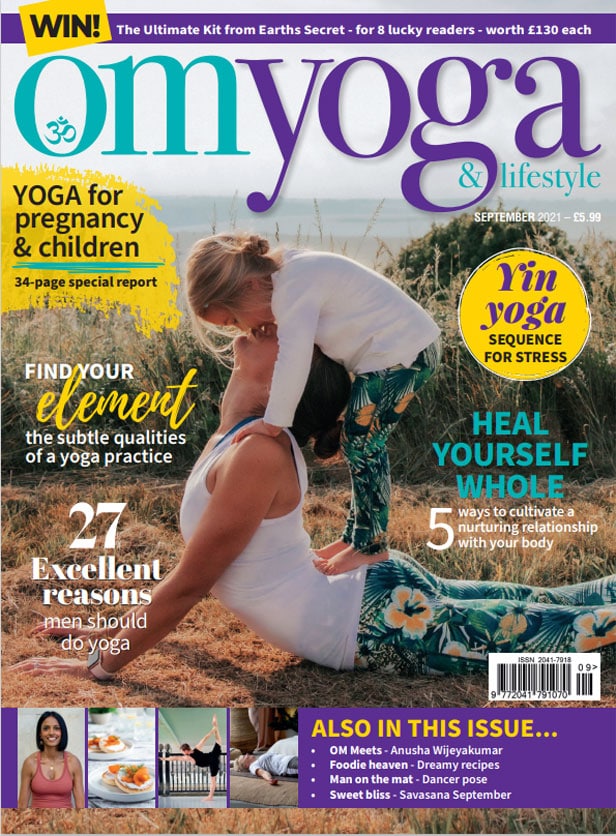Yin Yoga for stress
A Yin Yoga sequence to ease the symptoms of stress. By Julia Clarke
Yin Yoga effectively targets tension in your tissues and unwinds patterns of stress in your mind using a supportive, meditative approach to stretching. Stress can feel like a time bomb ticking away in your physiology, making your muscles tense, your breathing shallow and your mind distracted. Though stress is a normal human reaction to changes and challenges, when we experience it for long periods of time without any respite, we can start to feel drained and irritable and even experience physical symptoms like headaches and trouble sleeping.
Yin Yoga can be a powerful tool to offset the effects of everyday stress, and even prepare your nervous system for coping better with stress in the future.
Yin Yoga is rooted in Traditional Chinese Medicine theory which asserts that health and wellbeing rely on the unobstructed flow of Qi (vital energy) through your body and mind.
When the flow of Qi is blocked by tension in your physiology, you may experience mental and physical disharmony.
Yin Yoga features seated and reclining postures that are held quite passively for several minutes at a time.
This gives your nervous system time to downshift and signal to your tissues to relax so that your mind can enter a quiet, meditative state.
This sequence is specifically designed with stress in mind, releasing your body from patterns of slouching and contraction that we tend to hold when we feel stressed, inviting deep breathing to elicit the relaxation response, and serving up some grounding forward bends and hip openers to leave you feeling centred and replenished.
For this practice you will need two yoga blocks.
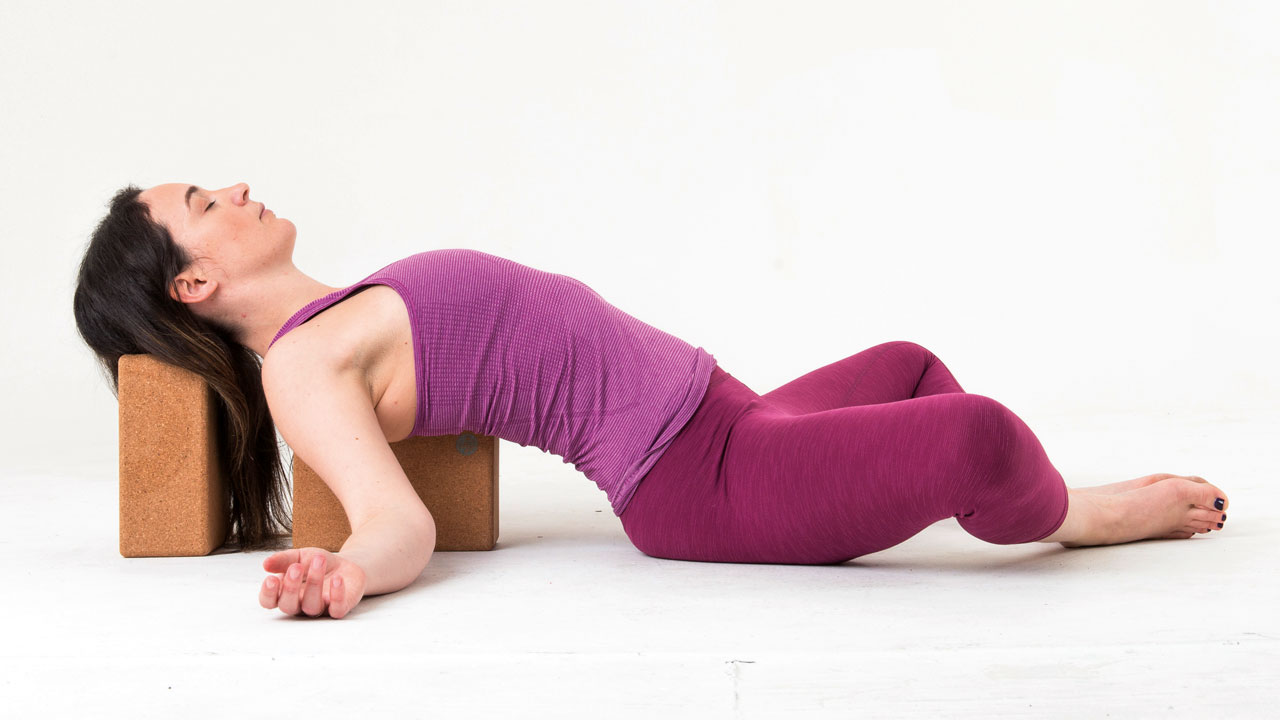
1. Heart Bench
3-5 minutes
Set up your blocks on your mat so that they make a “T” shape, with one block on its long setting making the bottom of the T, and one block on its tallest setting making the top of the T. Lie back on the blocks so that the bottom of the T rests between your shoulder blades, while the top of the T supports your head. Place the soles of your feet together and open your knees wide. Release your arms out wide with your palms turned up, begin to relax your muscles and bring your awareness to your breath. To come out of this pose, lift your head, place your palms down next to your hips and press yourself up to sitting. Move the blocks aside, then lie down on your back again with your knees bent.
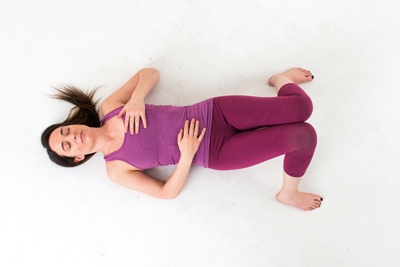
2. Constructive Rest With Balanced Breath
2-4 minutes
Place your feet about as wide as your yoga mat, and let your knees gently rest on each other. Place your left hand on your heart and your right hand on your abdomen and bring your awareness to your breath. Begin to breathe in for five seconds and out for five seconds, without any strain. After a couple of minutes, let your breathing return to normal and notice the effects of balanced breath.
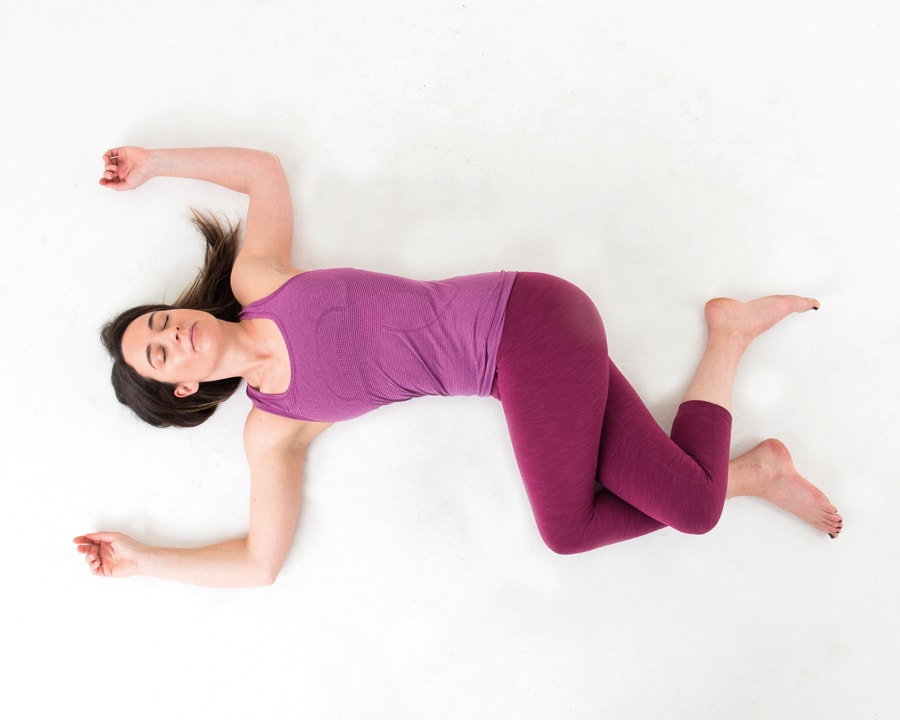
3. Eagle Leg Twist
2 minutes per side
Remain lying on your back and take your arms out wide with your elbows bent so your arms make a cactus shape. Shift your hips a couple of inches to the left. Cross your left thigh snugly over your right thigh then lower your knees all the way over to the right side. If you need some support, place a block under your knees. Don’t worry if your left shoulder lifts up off the floor. Try to relax as much as you can here and just let gravity do the work to unwind tension from your spine. To come out of the pose, press your thighs together and bring your knees to centre, then cross your legs the other way and change sides. After you’ve completed both sides, uncross your legs and roll over so that you are lying on your abdomen.
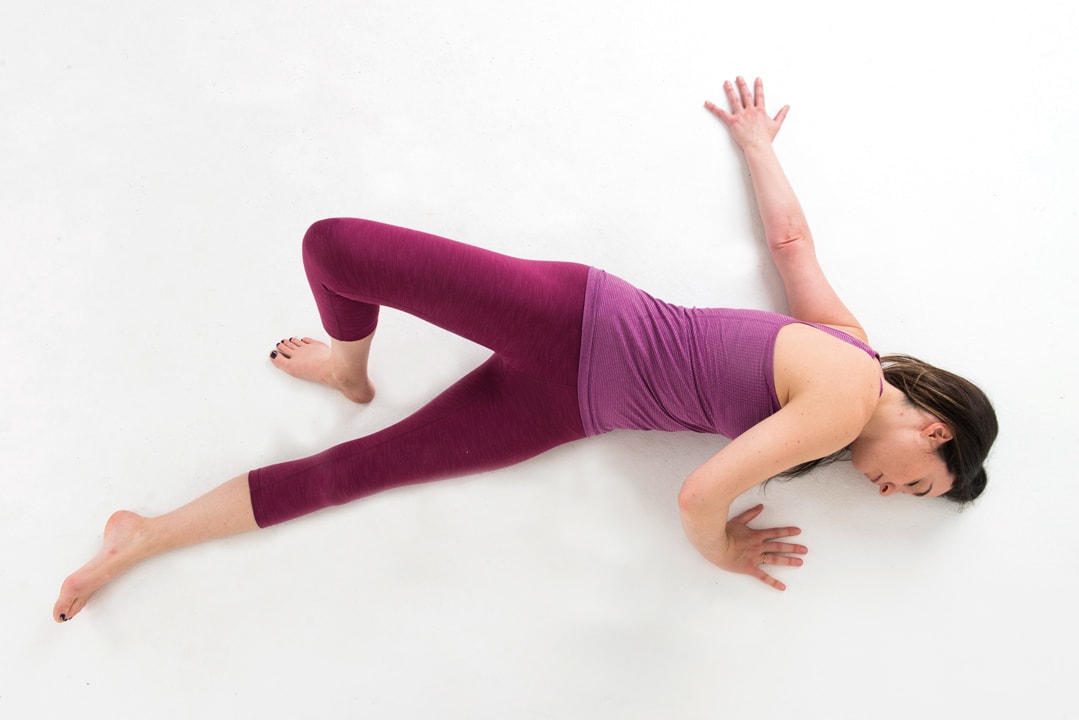
4. Starfish
2 minutes per side
Place your left cheek down on your mat and stretch your left arm straight out to the side, palm facing down. Keeping your arm there, use your right hand to help you roll as much as you can onto your left side — don’t worry if you don’t get very far. If you feel any strain in your neck, support your head with a block or pillow. Bend your right knee and place the sole of your foot on the floor behind you. Remember to breathe, and relax your neck and jaw. After a couple of minutes, come back to lying on your abdomen and rest here for a few breaths before changing sides. After you’ve completed both sides, rest for a few breaths then press yourself up to sitting.
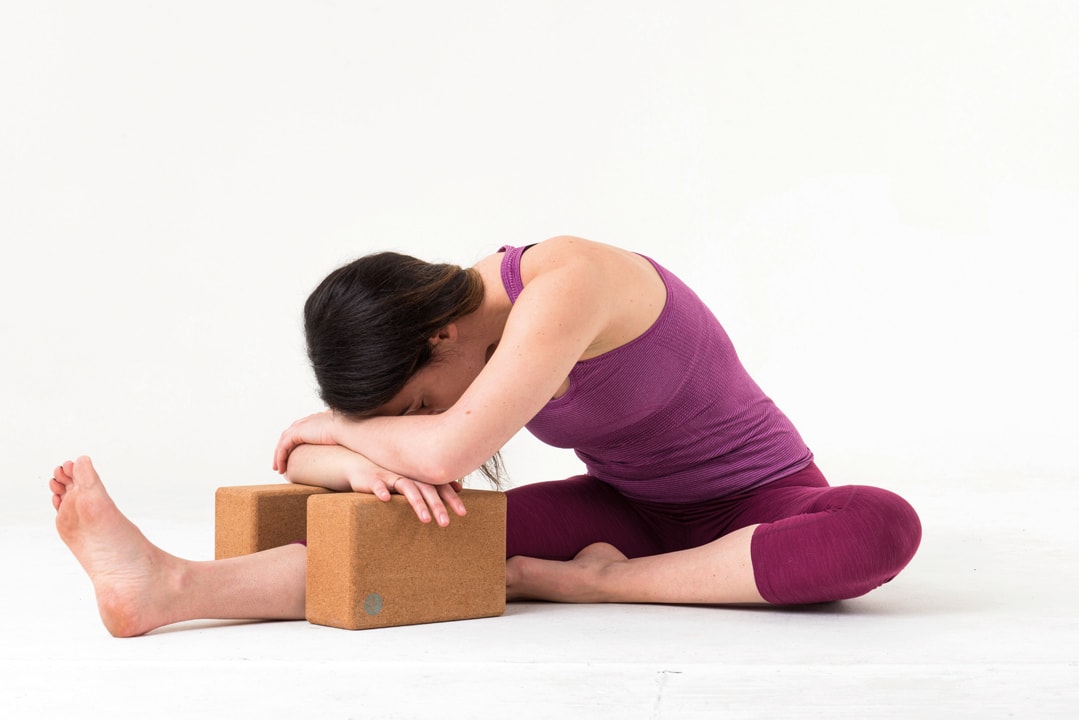
5. Half Butterfly
3-5 minutes per side
Extend your right leg out in front of you and bend your left knee, tucking the sole of your left foot against your right inner thigh. Place a block on either side of your right leg (they can be on any height) and bow forward, criss crossing your forearms on the blocks so that you rest your head on your arms. Close your eyes and enjoy the sense of inner contemplation that forward bends can bring. When you’re ready to change sides, use your hands to press yourself up, switch out your legs and repeat the pose on the other side. After you’ve completed both sides, press yourself up and stretch both legs out long for a couple of breaths.
6. Square Pose
2-3 minutes per side
From a cross-legged seat, use your hands to gently place your left shin on top of your right shin so that your left ankle is on top of your right knee. Place a block in front of you and lean forward a little to rest both elbows on the block so that you can cup your chin in your hands and relax your neck. Close your eyes and breathe softly, focusing on softening your hips. When you’re ready to change sides, use your hands to press yourself up, cross your right leg on top and repeat the pose on the other side.
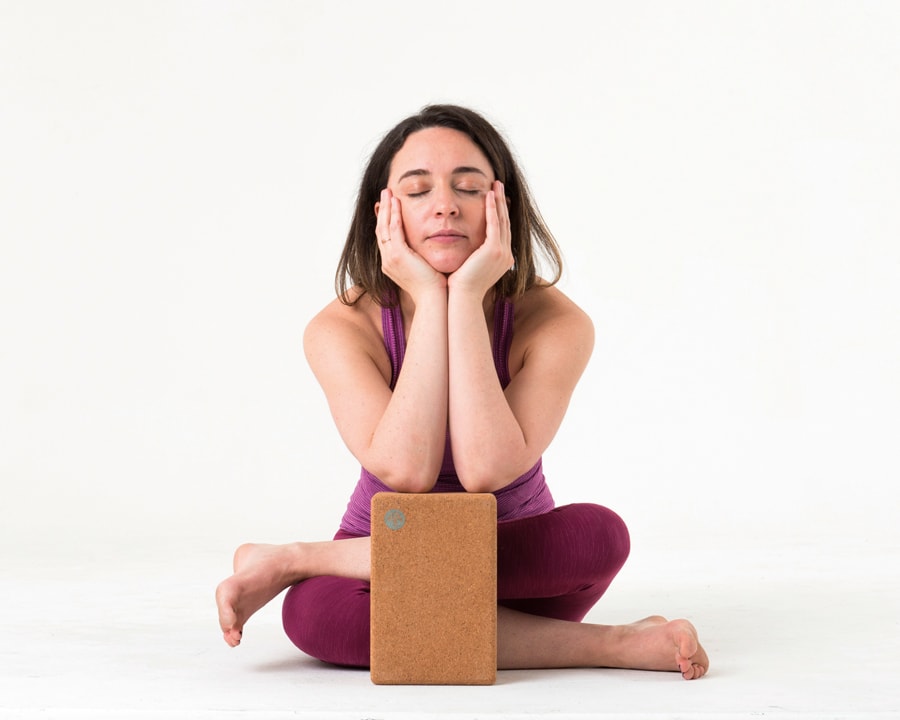
After you’ve completed both sides, press yourself up and stretch both legs out for a couple of breaths. Finally, lie down on your back for a few minutes of relaxation and enjoy a sense of deep peace and surrender.
Julia Clarke is a yoga teacher and Ayurveda practitioner based in Glasgow (juliaclarkeyoga.com)
Photos: Rick Cummings


